Blockchain-led technologies are shaping the world by initiating the IoT, Metaverse, NFTs, and other platforms that boost the industry in unprecedented ways. This is possible through the decentralization of the ledger system to be transparent and secure. There are endless ways of invention; thus, a new digital era has come. As blockchain networks and technology are still improving, new trends are about to evolve. They indicate that blockchain technology may be setting up for the digital assurance that brings the systems that interact with each other. Understanding such norms and movements will give a hand to developers, technological fans, and business people who will be encouraged to tackle digital transition. Let's discover tech trends and their impact in this article.
-
Blockchain technology is growing in popularity because it is diverse, efficient, good for digital ownership, and better online experience.
-
Discovering the latest trends of blockchain forces digitized transactions and interactions to evolve together through their functionalities and being scalable, sustainable, and private, as well as ready for the new technologies that are secure, efficient, and sustainable everywhere.
-
Developers should watch out for what is in store for the blockchain networks to exploit the advanced technologies to revolutionize their fields, maintain their competitiveness, and establish their solutions relevant and obtainable nowadays and in the near future.
Blockchain Tech Trends
Let us start to look at blockchain's technological and conceptual changes that occur in the application and comprehension of this technology. We will delve into these key tech trends, discussing their technical bases, uses, and the effects they will bring.
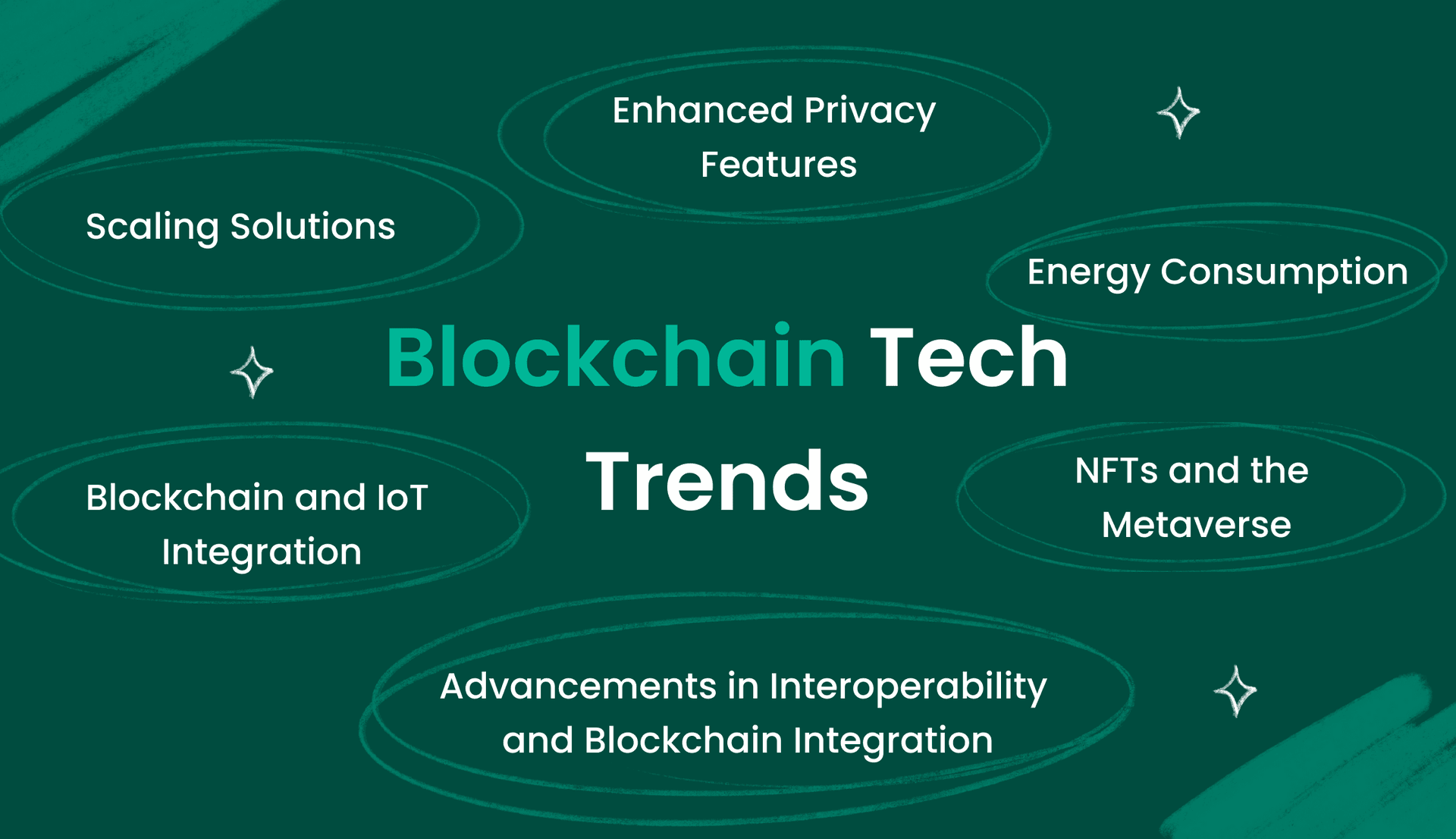
1. Scaling Solutions
A significant problem that blockchain technology faces is scalability, which implies the ability of a network to fulfill an increased number of transactions per second (TPS) without hampering its performance. Bitcoin handles approximately 7 transactions per second (TPS), Ethereum handles about 30, whereas card processing systems such as Visa can handle thousands of transactions per second.
This is crucial with the rising adoption of decentralized applications (dapps) and DeFi protocols. Solutions like Layer 2 protocols were found to solve this problem. These protocols, such as Lightning Network for Bitcoin and Optimistic Rollups for Ethereum, try to process off-chain transactions and settle them to the main blockchain. These scaling solutions render blockchain platforms very cost-efficient and increase the number of transactions that can be processed timely.
To illustrate, the Lightning Network nearly instantaneously provides Bitcoin transactions with insignificant fees, making it an ideal choice for cross-border payments and small-end purchases. Optimistic Rollups facilitate Ethereum scalability by enabling grouping transactions off-chain before finalizing them on the main chain, reducing costs for decentralized finance (DeFi) apps such as lending and trading.
 Explore the most common Solidity issues and how to avoid them.
Explore the most common Solidity issues and how to avoid them.
The Fintech developers intending to use Layer 2 protocols should aim at a smooth user experience by making the protocols part of the native processes of their program to avoid any friction during transactions. Moreover, paying attention to security issues like periodic audits and rigorous testing of off-chain assets takes center stage when protecting the assets off-chain. Such scaling solutions will eventually ensure the capacity to enable the Blockchain-based fintech to rival traditional financial systems.
On the developer's and company's side, scaling solutions have taken the spotlight, intending to make blockchain technology applicable to enterprise and large-scale applications. Besides the transaction throughput, these solutions aim to maintain or improve the level of security and decentralization.
Layer 2 scaling is subject to construction on top of the present blockchain protocol. These solutions involving off-chain transactions use the main chain only to ascertain the final results or outcomes.
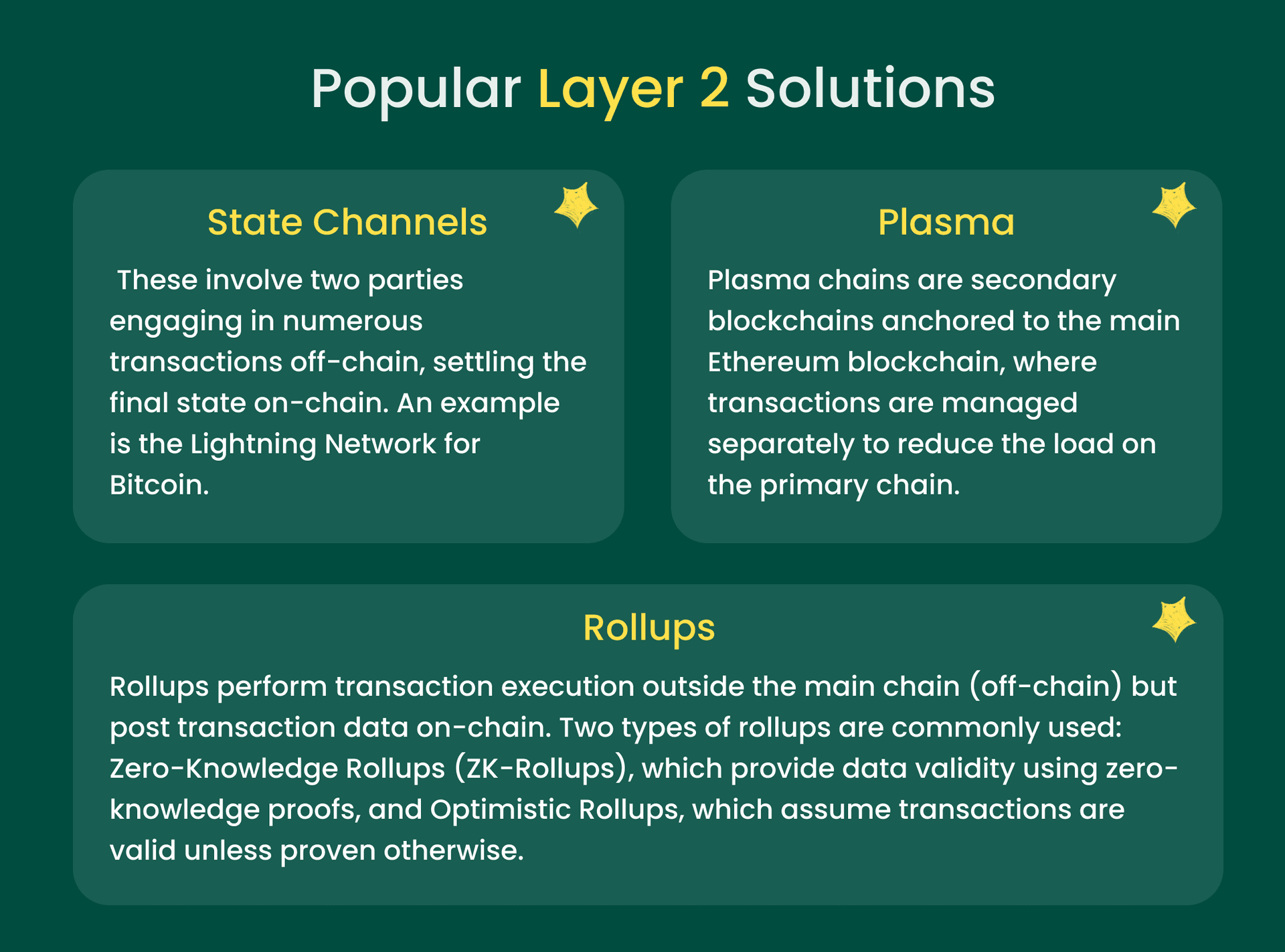
2. Energy Consumption
The massive energy needs of Bitcoin mining Earth's sustainability have become an issue. The Cambridge Bitcoin electricity consumption index calculates that the electricity consumed by Bitcoin mining alone is actually even more than the total amount of electricity used by Argentina in an entire year.
The primary focus keeps on shifting from energy-intensive consensus mechanisms to more sustainable alternatives. The two main approaches are:
Proof of Stake (PoS): Unlike PoW, PoS does not require miners to perform energy-intensive calculations. Instead, validators are chosen to create new blocks based on the number of coins they hold and are willing to "stake" as collateral. It reduces the energy required to maintain network security.
Delegated Proof of Stake (DPoS): An iteration of PoS, DPoS allows stakeholders to vote for a small number of nodes (delegates) that have the responsibility of validating transactions and maintaining the blockchain. This further reduces energy use by limiting the number of nodes that need to perform complex computations.
In addition to these, newer and more experimental consensus algorithms such as Proof of Authority (PoA) and Proof of Space and Time (PoST) are being developed and tested for their efficacy and environmental impact.
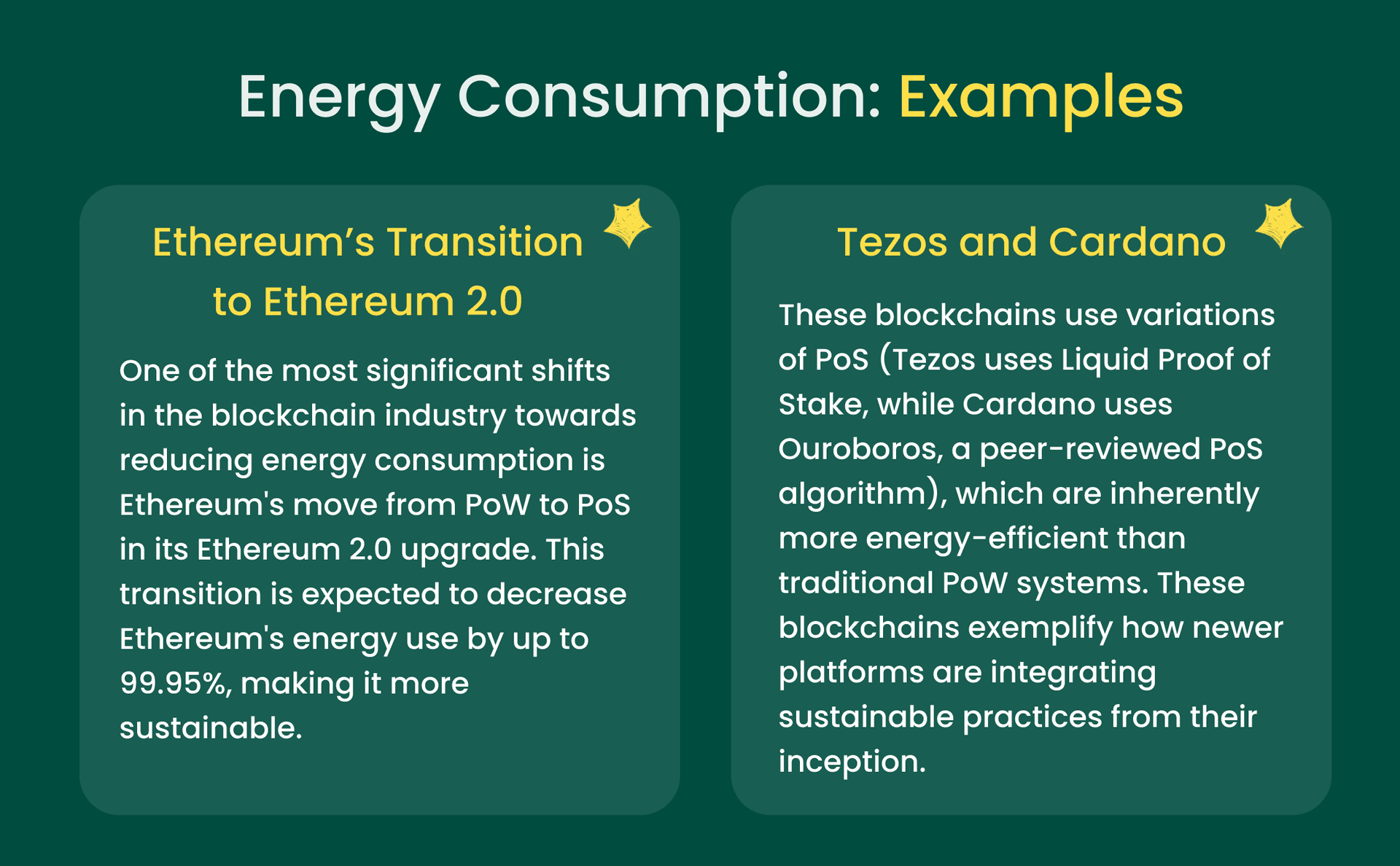
3. NFTs and the Metaverse
NFTs or digital assets are a means of proving to be the owner of the unique assets such as music, art, and virtual land of the Decentraland and the Sandbox metaverse platforms (read more about how to create an NFT marketplace). This integration blurs the line between the digital and traditional economy and, therefore, gives business people and curators many opportunities to profit from content and entertain global viewers who talk with each other in virtual media.
NFTs have the power to demonstrate actual ownership of digital assets that have been hard to prove and ascertain in the digital environment. The charm of NFTs is that they can do that. Now, it is not surprising to find out artists want to monetize their works directly with blockchain technologies by selling unique NFT works based on scarcity and Authenticity validation.
Metaverse derives from this principle but ensures that these digital assets can be operated and experienced through interactive space. It indicates the birth of the new age of digital relations, with citizens able to carry on the work, play, and socialize within a virtual realm completely similar to the real world. With the development of the Metaverse, advanced VR and AR technologies have merged. The Metaverse becomes more interwoven and available.
Blockchain as a Foundation for NFTs: NFTs are typically built on blockchain platforms like Ethereum, which support smart contracts—self-executing contracts with the terms of the agreement directly written into code. This allows NFTs to be bought, sold, and traded securely without a central authority and ensures that the history and ownership of each NFT are indisputably recorded.
Technological Infrastructure for the Metaverse: The Metaverse requires a robust infrastructure that can support a high number of users interacting in real-time within a persistent digital universe. Intricate designs factoring in managing digital real estate and assets ownership, developing cryptocurrencies for transactions, and advancements in VR technologies are required.
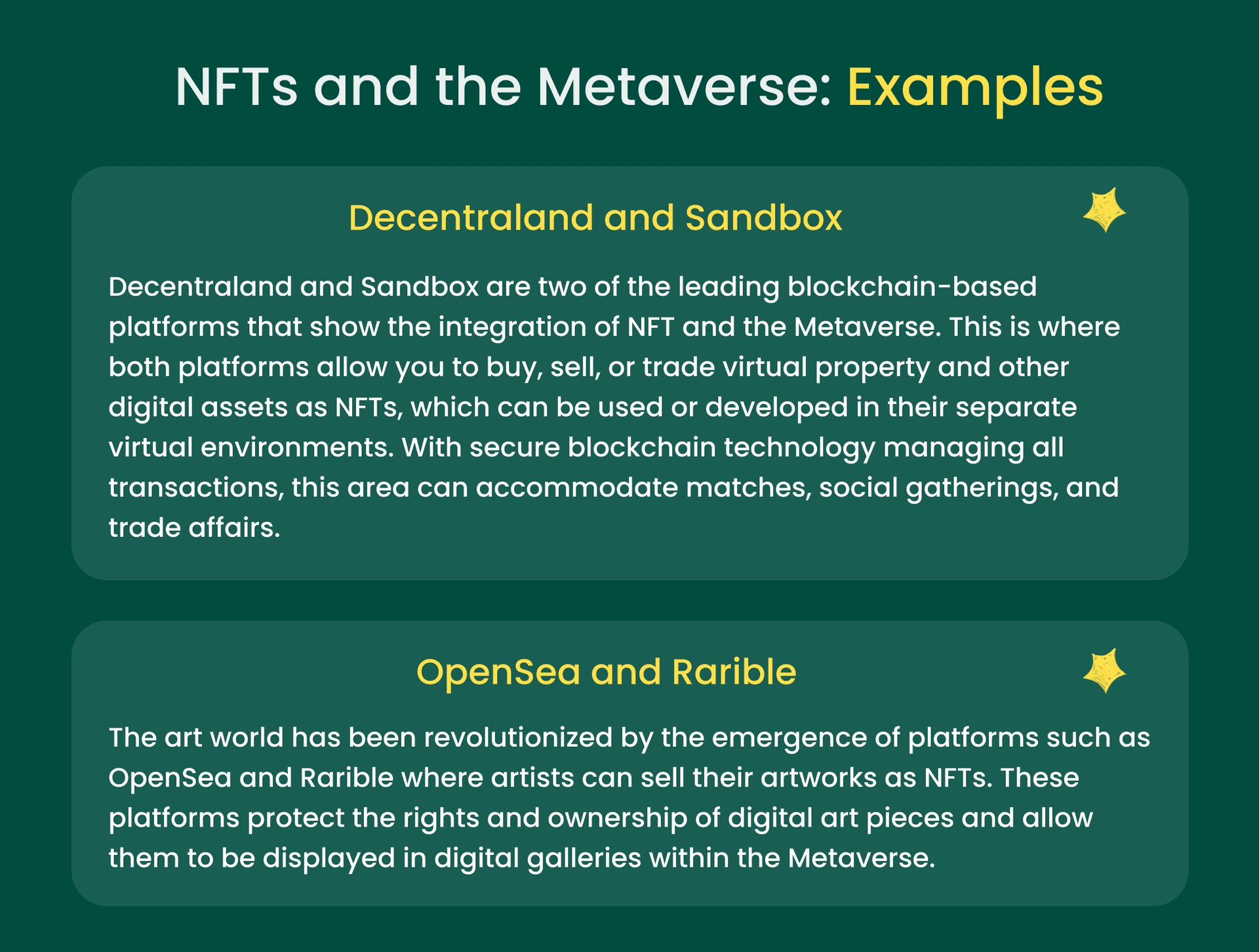
4. Advancements in Interoperability and Blockchain Integration
With the growing scale of the blockchain landscape with various protocols and networks, interoperability and cross-chain solutions become the keys to development. The interoperability protocols such as Polkadot, Cosmos, and Quant Network have contributed to the incredible development of seamless integration and data transfer between the chains, so fragmentation is being reduced. This involves, in particular, the area of decentralized finance (DeFi), where the manufacturers can use the advantages of numerous chains together to create solutions with a high level of scalability. As an illustration, cross-chain smart contracts are becoming more implementable, raising the idea of a fresh breed of decentralized programs not attached to single blockchains.
Unlike the situation of fragmented already operating blockchains, this system comes with a comprehensive and inclusive blockchain environment that allows the interchange of digital assets and data across different platforms. Interoperability makes the use of blockchain applications expand because businesses would have the ability to create more complex systems that would be capable of interacting with multiple blockchains. Thus, this flexibility will broaden the scope of adoptions as well as solve more complicated issues to fulfill the requirements of businesses.
Understanding how to create your own cryptocurrency can be a key step in entering the digital finance space and leveraging new economic opportunities.
Let's consider the example of supply chain management: Companies may use different blockchains for different stages of an interconnected supply chain; thus, commodity traceability and efficacy can be improved.
Integrating blockchain with legacy systems is a major hurdle that vastly affects this technology. The management of companies may not be so eager to change their IT infrastructures entirely because of the high expenses and operational interruptions. Additionally, aligning the blockchain structure with the current workflow can sometimes be technically complicated and needs specialization skills.
5. Enhanced Privacy Features
With the integration of enhanced privacy features, blockchain technology will offer users more control over their personal and financial data while at the same time we can have transparent transactions. This trend is due to the main feature of decentralized technology, which may seem problematic from the perspective of those searching for anonymity. Also, GDPR in the EU is a significant regulatory demand that allows solutions to be created in which blockchain transparency meets legal privacy standards. The increased data privacy features solve the private data handling problems and give the blockchain a greater acceptance in financial, health, and other fields.
To meet these needs, several technological innovations have been developed within the blockchain space:
Zero-Knowledge Proofs (ZKPs): ZKPs is a way by which one party (the prover) can prove to another party (the verifier) that a given statement is true without conveying any other information except that the statement is indeed true. Such technology is essential for transaction privacy since it verifies transactions but does not unveil other transaction details.
Homomorphic Encryption: This form of encryption allows computations to be carried out on ciphertext, generating an encrypted result which, when decrypted, matches the result of operations performed on the plaintext. This permits data calculations and analyses while the data is still encrypted, so confidentiality is guaranteed.
Private Transactions and Confidential Contracts: Some blockchains like Monero and Zcash offer enhanced privacy features by default, masking the identity of transactors and the amounts transferred. Similar functions are being introduced for several other platforms, including Ethereum, and users can decide when and how to expose transaction details.
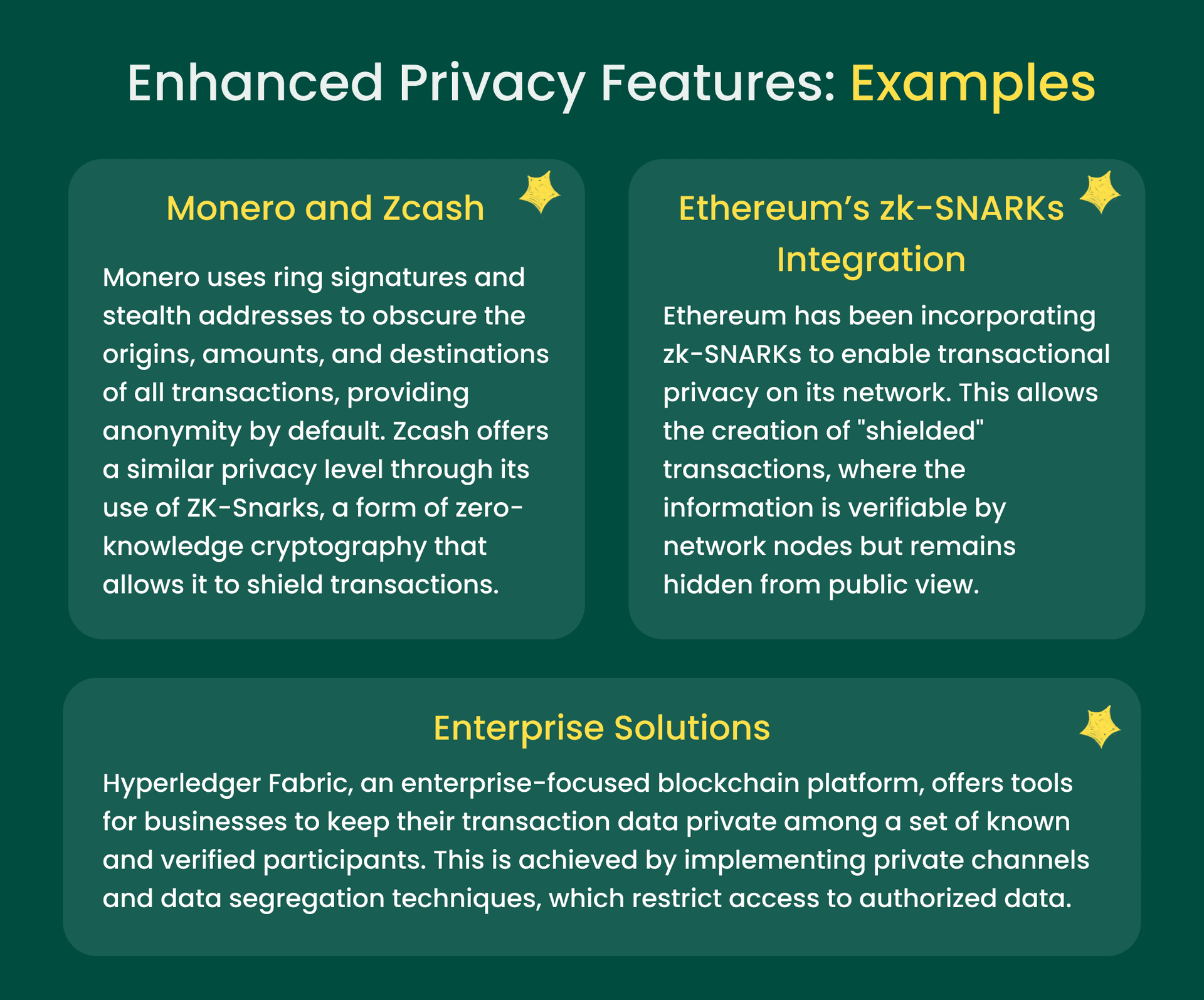
6. Blockchain and IoT Integration
Blockchain technology is fundamentally transforming how IoT devices perform and interact; they are becoming more secure, self-sufficient, and, therefore, more reliable. Internet of Things (IoT) devices collect massive volumes of data, which should be securely stored, managed, and processed. The blockchain platform's immutability and decentralization respond resiliently to security concerns associated with centralized data management. In combination with the fact that ledgers cannot be tampered with, blockchain improves integrity and security, and through smart contracts, automation of business logic. It gives an architecture that can automatically add IoT devices to transact and communicate securely with each other.
Tech Info:
Decentralized Networks: Blockchain operates on a decentralized network, eliminating single points of failure and enhancing the robustness and uptime of IoT systems. In critical infrastructure and applications with required uptime and reliability, this is a must.
Smart Contracts: These are self-executing contracts with the terms directly written into code. In an IoT blockchain system, smart contracts can automate processes. For instance, a smart contract could automatically release payments upon the delivery of goods, as verified by GPS data from a shipping container.
 Learn more about smart contract development.
Learn more about smart contract development.
Identity and Access Management: With blockchain, every IoT device can have a unique, immutable identity, making it possible to verify and authenticate devices without a central authority. This strikingly reduces the probability of spoofing and man-in-the-middle attack actions.

Agilie has 14+ years of expertise and has developed numerous successful blockchain projects. We aim to provide innovative blockchain solutions to shape the future of technology.
 Learn more about our blockchain software development services.
Learn more about our blockchain software development services.
Conclusion
With blockchain technology progressing faster than ever, grasping the recent breakthroughs is not just beneficial but vital for all the stakeholders of the tech world. Whether you are a programmer or an entrepreneur, staying abreast with these developments will offer you a competitive edge in utilizing blockchain technology to proffer solutions to real-world issues. By functioning as a provider of transactional bandwidth and as an energy source for energy-saving systems and extending its influence into the NFT and Metaverse, the technology can fundamentally change what we think the future looks like. In today's rapidly evolving market, developing blockchain systems for enterprises across various sectors, from finance to logistics, is essential for staying ahead of the curve and ensuring long-term success. By adopting such trends, the blockchain world is ready to harness the innovation and operational efficiencies available in different fields. In this dynamic environment, Agilie appears as a qualified supplier for blockchain software development and provides solutions that facilitate businesses to connect with the latest trends and proficiently apply these cutting-edge technologies.
Are you looking for a reliable development partner?
 Contact us, and we will find the best solutions on how blockchain can revolutionize your business.
Contact us, and we will find the best solutions on how blockchain can revolutionize your business.
